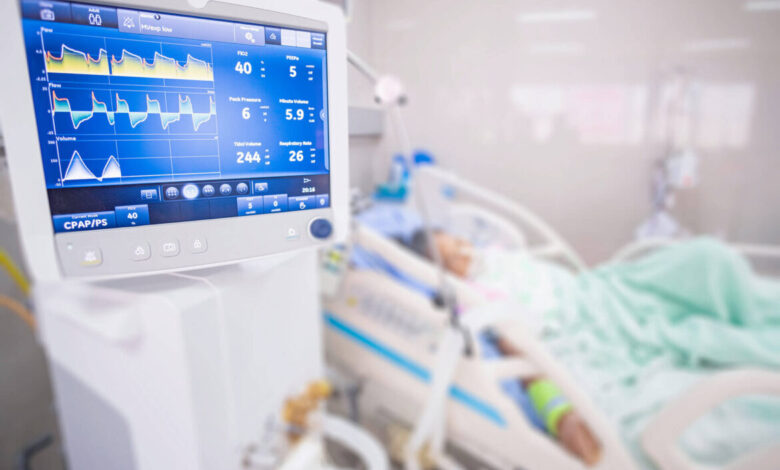Imaging Equipment’s Critical Role in Comprehensive Healthcare

Among various advancements, imaging equipment can be surely regarded as an engine in the detection, treatment, and follow-up of a myriad of conditions in the healthcare sector. It could range from fractures to tumors; radiological imaging has changed how clinicians deal with patients. These devices possess such a high degree of productivity and exactitude. The following text shows that medical imaging has developed over time, and imaging devices are vital components providing a number of benefits.
The modern imaging technology is an irreplaceable element of a patient-oriented healthcare system. It allows physicians to “look inside the body” to examine internal structures and processes that are difficult to observe with other diagnostic methods, yielding precise imaging for proper diagnosis and treatment. The subsequent history of the technology area has also seen the development of X-rays and more complex MRI machines, which revolutionized the provision of health care.
Contents
Key Components of Imaging Equipment
Through this journey, medical arts have evolved by means of the devices that are used in healthcare. Opening the door to X-ray and later to the refined scans of MRI and CT, each step in the line changed the perception of diagnostics and quality of care. Here is the journey of medical imaging, from its initial days to its modern age, with high-end technologies that revolutionize medicine.
In the late 19th century, medical imaging began with a simple X-ray. This first look inside the human body’s workings threw the door wide open. However, the field had a commendable development of scientific ideas. In the 1970s, CT scans, which have three-dimensional views, entered the arena, capping the diagnostic process. The birth of ultra-sonography has revolutionized the medical world, and ultrasound machines have become the most essential equipment in obstetrics and cardiology.
Medical imaging plays a critical role in bridging the gaps in overall patient care. They help with the early diagnosis of diseases, give location information in case of abnormalities, and monitor treatment effectiveness. Just like in oncology, where imaging tools enable doctors to ascertain the origin and extent of tumors and direct people to appropriate therapies. MRI and PET scans help pinpoint the regions of abnormality in the brain and can confirm the presence of a neurological condition.
Basis of Imaging Devices
Image equipment depends on a really complex functioning of key parts so as to provide accurate diagnostic results. The following is a walkthrough of the building blocks of imaging technology that create the basis for imaging techniques.
Critical Components
A diagnostic imaging device consists of several critical parts, every one of which contributes to precise image production. Components include X-ray tubes and detectors, which all collaborate for the accuracy of pictures. The equipment directly determines its efficacy, whether the defect is in any part of the device; it may affect the reliability of the diagnosis.
The Need for Properly Working Medical Imaging Parts
Up-to-standard medical parts play a major role in creating high-precision scanning equipment. This guarantees reliability, accuracy, and safety when an image is being captured. For successful performance, high-quality medical imaging parts have to be in place to meet production standards. This means that refurbished material should include the replacement parts for MRI machines as well as the components of the X-ray machine, which should all follow industry regulations.
A reputable medical imaging parts supplier would have a stock of coils for MRI, X-ray tubes, and ultrasound transducers, among others, for the hospital. Their products pass the entire testing procedure to get certification from OEM, which implies that their products are rightly compatible and perform finely.
Advanced Imaging Modalities and Their Benefits
In this regard, healthcare theoretically constitutes a domain in which diverse imaging modalities become an indispensable fundamental tool providing unique and rotationally irreproducible information about the human body. From MRI to CT scans, through varied modalities, clinicians can assess the patient’s anatomy and function, providing the clinicians with details as they revolutionize diagnostics, treatment planning, and disease monitoring.
Many high-end imaging modalities, such as MRI, CT, ultrasound, and positron emission tomography (PET), are already there, making them outcast to the old ones, along with multiple health benefits. MRIs belong to the group of diagnostic studies that reveal the images of soft tissues and help identify diseases like brain tumors and joint injuries. The CT scans are especially good and efficient at accurately showing cross-section images, and they are very helpful in detecting internal wounds and malignant tumors.
These modalities offer paramount importance in the treatment planning and follow-up regimen. Surgeons resort to pre-operative imaging to make simulated maps very accurate in real life before operations. Precision diagnosis through PET scans and their use for evaluating treatment response, including subsequent adjustments, is critical in oncology. Real-time ultrasound-guided procedures not only make biopsies and injections precise but also accelerate the speed of diagnosis and treatment.
Imaging Technology and the Quality of Patient Care
In modern healthcare, the imaging technology input has blown out the wall among patients. Through in-depth visualizations of the inner structures and processes, radiology plays a crucial role in the field as an aid in diagnostics, planning and executing treatment and monitoring, respectively. Here’s an account of how imaging data, specialists’ cooperation, and technical introductions are presently bringing to light unprecedented levels of care for patients.
- Linking to Treatment Regimens: Imaging data, due to its integration into the patient’s treatment plan, when it’s added to the general view of the patient’s condition by the clinician, provides a clinician with a comprehensive view of the patient’s condition. The integration of healthcare facilities allows multidisciplinary teams to work together collaboratively, assuring integrated care.
- Collaboration Between Specialists: Imaging technologists constantly interact with other healthcare professionals, namely radiologists, physiologists, surgeons, and oncologists. Their regulatory spirit leaves no room for doubt: accurate diagnoses and the best treatment strategy assurance. Tumor boards are interdisciplinary forums where experts evaluate and validate the imaging results and plan unique treatment strategies for cancer patients.
- Technological Innovations: Technologies are becoming increasingly in-depth, so imaging techniques continue to lengthen. AI algorithms for image analysis are developing quickly, so diagnosis times are getting shorter, and the precision of the diagnostics is improving as well. The implementation of mobile scan tools has made diagnostics in abandoned areas possible, which limits bottlenecks to healthcare.
Significant Barriers and Levers of Imaging in Healthcare
The enactment and the keeping of image technology at medical adventures are a multitude of issues and opportunities. These factors affect the imaging landscape, from start-up expenses to regulatory matters. Overcoming these barriers and learning the potential routes to progress in this field is a significant task nowadays.
The main challenge connected with the utilization of the pictured gear is ensuring its installation and keeping. From there forward, complying with regulations in sight of norms like the Health Insurance Portability and Accountability Act (HIPAA) is a necessity.
While the road is fraught with many obstacles, many advantages must be exploited to optimize imaging and health care. The use of the modern technologies has a higher capacity for diagnosis and greater comfort for the patient. Effective streams supply dependable partners by which parts and maintenance procedures can run smoothly.
Wrapping Up
Advanced mechanical items are the precondition to secure operation and fast service. For this reason, if it is relevant to your medical imaging equipment, let APlusMedical.biz become your number one provider. As the largest manufacturer and distributor of medical imaging technology and associated products across the globe, they are committed to providing hospitals, clinics, and stand-alone healthcare units in every corner of the world with new, used, or refurbished equipment and spare parts. Visit their website at once to see their wide range of medical products. You won’t believe it; they can definitely provide you with everything you are looking for.



